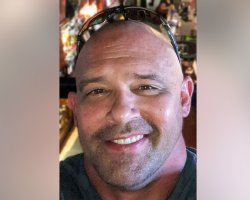The Mechanics of Opioid Addiction

“The opioid epidemic.” We hear this line on the news, on social media, in discussions within our communities, and so on. It is a well-known fact at this point that the United States is struggling with an opioid epidemic. Opioid addiction has been a problem for almost a century, but only the last two decades have turned this “problem” into a full-blown national public health crisis.
According to the Centers for Disease Control and Prevention, the time period from 1999 to 2017 saw almost 218,000 people dead from overdoses on prescription opioids. And if we look at the degree of change, overdoses were five times greater in 2017 than they were in 1999.
The National Institute on Drug Abuse also warns us with urgency regarding opioids. According to their research, they found that about 21 to 29 percent of patients prescribed opioids for chronic pain end up misusing them. Why would any patient want to take a drug that had almost a one in three chance of turning them into an addict?
Opioids, A Lethal Problem

The opioid epidemic is a genuinely lethal concern. Since the 1990s, the amount of opioids prescribed to patients has grown, as has the addiction rates and overdose deaths from those same drugs. Heroin has made a comeback, and the streets are filled with other illegal street drugs that have been cut with synthetic opioids. It’s so bad that overdoses are now the leading cause of death in individuals under the age of 50.
Our nation suffers terribly at the hands of the opioid crisis despite the fact that it is common knowledge that these drugs are risky. So why then, if opioids are so dangerous, would anyone start using these drugs in the first place?
A Person Starts Using Drugs to Solve a Problem
While each person is different and while various drugs affect different people in their own, unique way, the way addiction progresses is more or less uniform.
Someone who uses drugs is seeking to solve a problem and they have elected to choose drugs as the “solution” to that problem. People are basically good, with basically good intentions, and basically sensible judgment. But when confronted with a problem that seems unsolvable, we can err on the side of using drugs to cope with or cover up the problem.
Most people who use opioids know they are harmful. While they may not be fully educated on the actual width and breadth of the harm at hand, they likely have some idea of the dangers that they face. But to them, “solving the problem” is so important that doing so outweighs the risks of the drug use itself.
Once the Person Uses Drugs, Cravings Set In

Another facet of opioid addiction is the cravings that these drugs create. After just one or two uses, a person will begin to feel a gripping, pulling, almost visceral need to use the substance again. One thing we can compare this to is the cravings we feel in our bodies after we have gone a full day without eating any food. Except, in the case of drug cravings, these impulses are magnified 10X.
And there are other factors. Not only does the person crave the substance, but the body has become tricked into thinking it needs opioid drugs within itself to function. The drug chemicals have taken over the natural function of the body’s own, organically generated compounds, and so the body perceives drugs as being necessary for proper function.
Physiological Metabolization Brings Drug Metabolites Back into the Bloodstream
Let’s take that a step further. As a person uses drugs, the effect goes above and beyond just the instances of drug use themselves. Even when a person is not actively using drugs, the drug residues are still resting in the fatty tissues of the body, waiting to be woken up again. Narconon has its own process for removing these drug toxins so the body is never again influenced by past drug use.
This is why a treatment program that addresses all the facets of addiction recovery is so important. In life, even years after cessation of drug use, the body can still metabolize fat, and, if drug residuals are still stored in those fatty tissues, they will react on the body. Not only is this like experiencing a drug trip all over again (even years into recovery), but it might incite a relapse. That’s why getting clean the right way the first time is so important.
We can see that drugs will continue to influence the individual, even if he or she wants to quit. This is one of the many factors of drug use that makes it so difficult to break free from it.
One’s Frame of Mind Is Also a Factor

So far, we’ve only just discussed the physical ramifications of opioid use. What about the psychological, spiritual, personal, mental, and behavioral consequences?
A New York Times article discussed the nuances of opioid addiction. To gather their information, the New York Times interviewed hundreds of opioid addicts to understand what it was like to be an opiate addict from the perspective of the addict.
“Like other drugs, opioids produce a surge of dopamine, a chemical messenger that tells the brain that ’taking this drug is good, repeat it….’ ”
According to the article, “The brain balances its own endorphins like a thermostat. When an external source keeps flooding the brain, it throws that system off. Like other drugs, opioids produce a surge of dopamine, a chemical messenger that tells the brain that ’taking this drug is good, repeat it.’ The brain’s response to opioids and the surges in dopamine they cause can rewire circuits in the brain. The brain’s response to these chemical changes makes life difficult without the drug.”
The effect of opiates on the brain has a direct influence on the impact of those same drugs on the mind. Pretty soon, it all starts to fall apart, and the person begins to feel like they have to get opioids if they want to have any shot at physical or mental peace.
The Person’s Life Completely Falls Apart
Now the person is hooked, physically and mentally. Here’s where the depression and grief start to set in. One thing you don’t hear discussed all that much is the fact that most addicts know they are doing something wrong. Most addicts know they are walking a dark path, and they feel bad about it. Their transgressions against themselves and their family members start to build up, and they feel awful that they are hurting those they love.
But as an addiction grows, other parts of a person’s life fall by the wayside. Before they know it, other areas of life do not matter as much. Their job, family, home, finances, relationships, possessions—it all starts to fall apart.
Help Is Available
Put into perspective, we can start to see why an opioid addiction is so harsh. Thankfully, help is available. For those who struggle with opiate addiction, the path out of it lies in a course through an inpatient drug and alcohol addiction treatment program. Such programs offer the tools and recovery methods necessary to free people from the morass of addiction.
If you or someone you care about is struggling with an opioid habit, seek help from a qualified, inpatient treatment center today.
Sources:
- https://www.cdc.gov/drugoverdose/data/prescribing.html
- https://www.drugabuse.gov/drugs-abuse/opioids/opioid-overdose-crisis
- https://www.cbsnews.com/news/overdoses-are-leading-cause-of-death-americans-under-50/
- https://www.narconon.org/drug-rehab/new-life-detox.html
- https://www.nytimes.com/interactive/2018/us/addiction-heroin-opioids.html


 ®
®